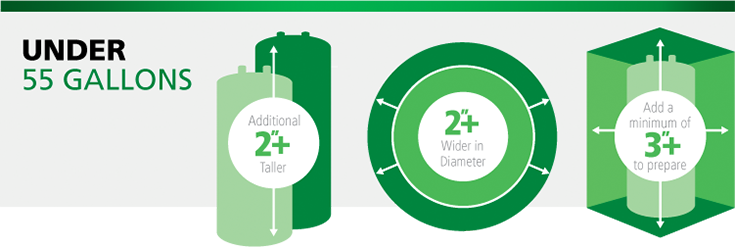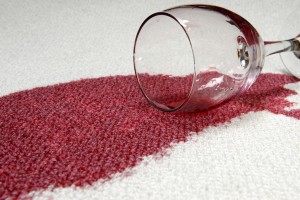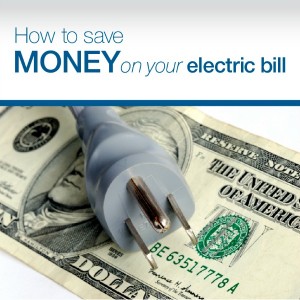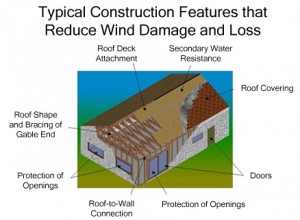 Today, new energy efficiency standards from the National Appliance Energy Conservation Act (NAECA) go into effect for water heaters. Starting that day, manufacturers will only be allowed to make water heaters that conform to the new energy standards. Existing water heaters will still be allowed to be sold, but I don’t expect that supply to last for more than a few months, and I’ve heard those supplies have already disappeared in some areas. Here’s how the changes will affect homeowners.
Today, new energy efficiency standards from the National Appliance Energy Conservation Act (NAECA) go into effect for water heaters. Starting that day, manufacturers will only be allowed to make water heaters that conform to the new energy standards. Existing water heaters will still be allowed to be sold, but I don’t expect that supply to last for more than a few months, and I’ve heard those supplies have already disappeared in some areas. Here’s how the changes will affect homeowners.
Side note: Don’t call it a “hot water heater.” It’s just a water heater.
Water heaters under 55 gallons will need to have their energy efficiency rating bumped up just a tad. To do this, manufacturers will be adding about an inch of insulation to the water heater tank. This will increase the diameter of same-capacity water heaters by over two inches, and will increase the height by about one to two inches.
This increase in size won’t be a big deal for most people, but if the water heater is squeezed into a tight space, replacing the water heater could be a hassle, or possibly require replacement with a smaller unit. The diagram below is being used with permission from AO Smith.
Gas water heaters over 55 gallons will need to have an energy factor of at least .74 to .75, depending on the exact size. To achieve this modest energy factor increase, it’s expected that manufacturers will only produce condensing water heaters for these larger sizes. That means a powervent water heater, which needs to have its own dedicated exhaust vent, a power source, and a way to dispose of condensate. These water heaters are obviously more expensive, and the installation costs will be higher too.
Electric water heaters over 55 gallons are about to get silly. For these units, the energy factor is going to more than double. To get there, you’ll be looking at a heat pump water heater. Never seen one? I haven’t either.
A heat pump water heater works by extracting heat from the air and transferring it to the water in the tank. Of course, this means it’ll act like an air conditioner in the home. How much will this cool the space it’s in? I don’t know yet, but I’ve heard it’s fairly significant.
It’s important to utilize a Home Inspector that’s on top of technology, inspection regulations and the always changing state and federal laws. Tommy Joynes of Buy Your Side Inspections is trusted, knowledgeable and ready to assist homeowners and homebuyers. Just cal 407.870.0911 or visit www.thefloridainspector.com!
Read More

With the endless parade of celebrities walking the red carpet before the upcoming Oscars, it’s a reminder about the condition of your own home’s carpets. Can you carpets pass the “Red Carpet Ready” test? If you are thinking about selling your home in the near future, potential home buyers may be turned off by worn or stained carpet and ask for a reduction in asking price to replace the flooring before the offer or not make an offer at all.
The carpet in your home is a host for all kinds of unwanted materials including dust mites, bacteria, viruses, dead skin cells, mold, pet dander and of course – dirt!. Many of these conditions can contribute to allergies and health concerns. You can follow these simple steps to make sure your carpets are well cared for and maintained to help keep them as clean as possible.
- Vacuum Regularly. Carpets should be vacuumed at least twice a week with “high-traffic” areas vacuumed daily to prevent the buildup of unwanted materials. Areas with less traffic can be vacuumed once a week. It’s important to maintain your vacuum by replacing the bag often or cleaning the filter frequently.
- Remove Stains Immediately. Treat spills and pet accidents as soon as they occur to make sure they don’t become permanent. There are many professional products available to remove stains. If you want to go the natural route, a simple internet search can result in a number of homemade stain removal solutions as well.
- Professional Cleanings: As a rule, your carpets should be cleaned once a year by a professional service to get the best results under normal conditions. If you have pets or children, they should be cleaned more frequently.
If you are planning on buying or selling a home in the near future in Central Florida and Osceola County, we believe strongly that a full home inspection is a must! Having a full Home Inspection done by Buy Your Side Home Inspections will take all the guesswork out of buying or selling a home. Call Tommy Joynes of Buy Your Side Home Inspections at 407.780.0911 today!
Read More

Wind Mitigation Inspection
The quiet 2014 Atlantic Hurricane Season is no reason for Floridians to be complacent about protecting their homes. Waiting until it’s officially hurricane season to add upgrades to protect your home maybe too late. As a homeowner, you should take the time during the off season to assess your home’s preparedness to withstand severe weather. In Florida, that protection should include installing home features to prevent windstorm damage. Not only do these wind mitigation features make your home stronger, they protect the home and can also lower your home insurance premiums over the long term.
The most common wind mitigation features include:
- Storm shutters and panels that protect windows and other openings from wind, rain and projectiles
- Doors and windows built to withstand wind pressure and projectiles
- Roofing materials and coverings that shield your home from wind and rain
- Special attachments for roofs and walls to prevent the roof from being blown off by severe winds
- Roof and building shapes that are more resistant to high winds
Once you’ve added these features to your home, having a Wind Mitigation Inspection should be your next step. These specialized inspections are beneficial because they:
- Inspect mitigation features present in your home
- Review how you can make your home stronger and more resistant to damage
- Provide written documentation to submit to your insurance company requesting premium discounts.
When it comes time for your inspection, you will want to provide copies of any documents you have from your upgrades. The inspector will perform a comprehensive inspection of your home and property, including:
- Roof shape, materials, condition and connections
- Home’s basic structure and construction materials
- Attic interior
- Exterior and garage doors, windows and skylights
- Wall construction
- Storm shutters/panels
Our certified home inspection professionals have the tools, knowledge and experience to make sure your home can endure the upcoming storms while also saving you money. Call Buy Your Side Home Inspections to schedule your inspection today. 407.780.0911.
Read More

Is Your Money Going Down the Drain?
Earlier this week we listed seven Hacks to Lower Your Electric Bill. (Read more here: 7 Easy Hacks to Lower Your Electric Bill). Below are 4 Water Guzzlers in your home and tips on how to lower your water consumption. According to the EPA, the average American family of four uses 400 gallons of water per day. On average, approximately 70 percent of that water is used indoors. The biggest culprit is your bathroom toilet, which guzzles about 27 percent of your water consumption. Low flow appliances and fixtures can help to lower that amount by as much as 30% depending on your location.
- Install Water-Saving Toilets: A standard toilet uses 1.6 gallons per flush and much older toilets can use as much as 3.5 to 7 gallons per flush. By installing a water-saving toilet which uses 1.28 gallons per flush or less. a family can reduce the amount of water used for toilets by 20 to 60 percent. By the way, did you know that a running toilet can waste about 200 gallons every day.
- Install a Low-Flow Water Faucet: A bathroom faucet generally runs at 2 gallons per minute. Install a low-flow water faucet and turn off the tap while brushing your teeth or shaving; that alone can save a person more than 200 gallons of water per month.
- Use a High-Efficiency Washing Machine: These washers can conserve large amounts of water. Traditional models use between 27 and 54 gallons of water per load, but new, energy—and water—conserving models (front–loading or top–loading, non-agitator ones) use less than 27 gallons per load.
- Shower Better with Low Flow Shower Heads: A standard shower uses 2.5 gallons per minute and also requires energy to heat the water. By replacing just one shower head with a low-flow fixture, the average family would save 2,900 gallons of water plus the amount of electricity needed to power the home for 13 days, and more than $70 in utility bills.
The EPA recommends WaterSense labels models which are certified to be high performing. They are available in many styles and price points, and some utilities even offer rebates.
You’re not only saving money, but should you decide to sell your home, these features are desirable by most home buyers. When you’re ready for a pre-listing inspection or just want to see how your home measures up, call Buy Your Side Home Inspections – Central Florida’s most-respected home inspection service. 407.780.0911.
Read More

7 Easy Hacks to Lower Your Electrical Bill
Here are 7 easy and relatively inexpensive hacks you can do right now to lower your electric bill every month and not break the bank doing it.
- Turn Off Electric “Vampires”: Devices such as computers, small appliances, televisions, cable boxes, game consoles are sucking up energy even when they are not in use. Group your cords by location in your home and then plug the cords into a power strip that you can easily turn off when you go to bed or leave the home. If that’s too much trouble, programmable power strips are available at hardware stores for a minimal cost.
- Switch Out Those Light Bulbs: Besides turning off lights in rooms when not in use, compact fluorescent lightbulb are slightly more expensive than their regular incandescent counterparts but the return on the investment is huge and they last longer. Can’t afford to do it all at once, change bulbs one room at a time.
- Ditch the Switch and Dim That Light: Besides creating a mood, dimmer switches are easy to install and give you more options for lighting besides on and off. Make sure your dimmer is compatible with your compact fluorescent lightbulb. Newer dimmer switches will actually conserve energy when you’re not lighting the bulb at full capacity. Be sure to turn off the electricity first!
- Switch to Reusable HVAC filters: You’ll save money in the long run because your unit will be more energy efficient and you’ll extend the life of your HVAC system.
- Use Electricity During Off-Peak Hours: You will pay more for electricity during peak times because of the demand. Avoid using appliances and charging your techno gadgets during these hours. If you don’t know what your area’s peak hours are, you can call your local energy provider and ask. The peak hours vary by season, especially here in Florida.
- Use Slow Cookers, Pressure Cookers and Microwaves: The first one is slow and the next two are fast but they all use less energy than your range and oven.
- Get a Programmable Thermostat: You can program these thermostats based on your family’s needs and schedule. They are inexpensive at about $25 and available at your local hardware store.
Having a full Home Inspection done by Buy Your Side Home Inspections will take all the guesswork out of determining the condition of your home. When the inspection is complete, you will be advised of any problems that were discovered and we will discuss solutions or needed actions.
Call Tommy Joynes of Buy Your Side Home Inspections at 407.780.0911 today!
Read More

Construction Features That Reduce Wind Damage and Loss
As the Northeast tries to cope with a historic blizzard bringing hurricane force winds, Floridians should be reminded that we have our own share of hurricane force winds. It’s not too early to begin thinking about your roof’s ability to withstand hurricane-force winds. Wind Mitigation Inspections offer significant discounts to those who provide proof that their homes can competently reduce heavy windstorm damage. Call us now to see if you qualify for these discounts.
Being so close to the ocean guarantees that we will be prone to hurricanes. What does this mean for the average homeowner in Central Florida? This means storms will be potentially knocking at your rooftop beginning June 1, 2015 with incredibly strong and damaging winds. Do you know if your home has what it takes to make it through successfully? Buy Your Side Inspections is your solution.
The certified home inspection professionals at Buy Your Side Home Inspections have the tools, knowledge and experience to make sure your home can endure the upcoming storms while also saving you money. 407.780.0911.
Read More
 Today, new energy efficiency standards from the National Appliance Energy Conservation Act (NAECA) go into effect for water heaters. Starting that day, manufacturers will only be allowed to make water heaters that conform to the new energy standards. Existing water heaters will still be allowed to be sold, but I don’t expect that supply to last for more than a few months, and I’ve heard those supplies have already disappeared in some areas. Here’s how the changes will affect homeowners.
Today, new energy efficiency standards from the National Appliance Energy Conservation Act (NAECA) go into effect for water heaters. Starting that day, manufacturers will only be allowed to make water heaters that conform to the new energy standards. Existing water heaters will still be allowed to be sold, but I don’t expect that supply to last for more than a few months, and I’ve heard those supplies have already disappeared in some areas. Here’s how the changes will affect homeowners.





Follow Us!